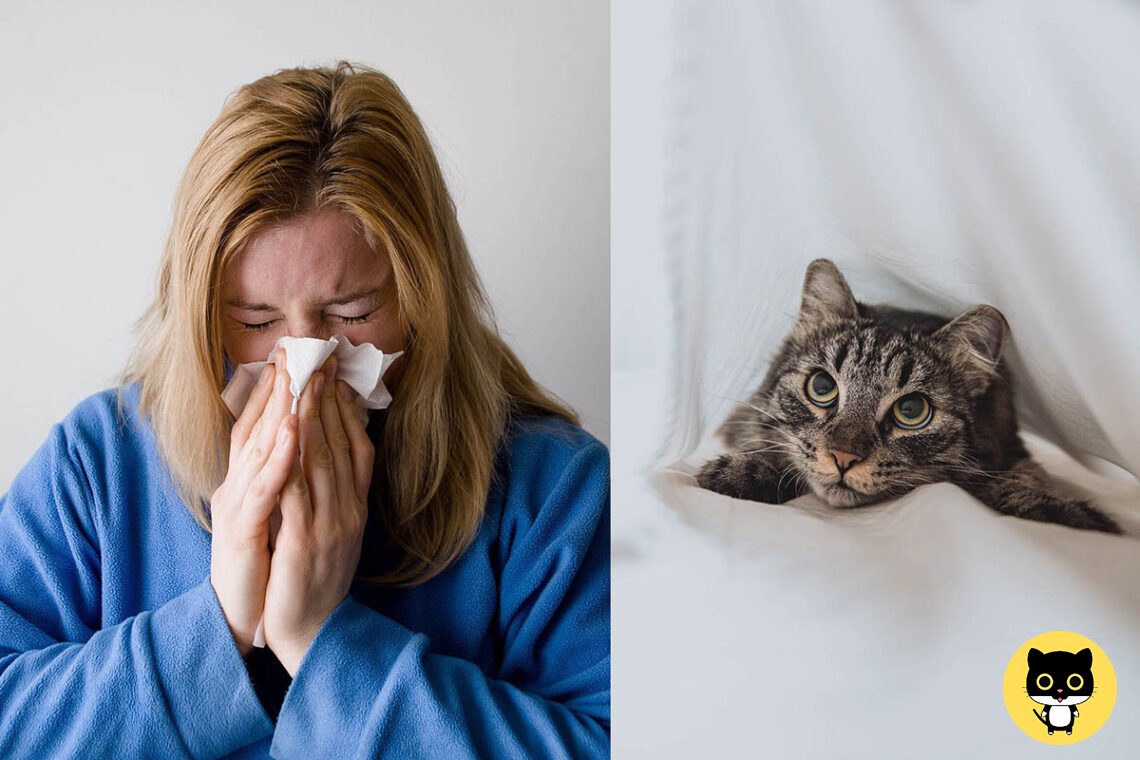Do you suspect that you or someone you know is having an allergic reaction to cats? Cat allergies are more common than you might think and can come with a variety of symptoms. We will cover the basics of cat allergy symptoms, common signs and symptoms, treatments, and more.
Cat allergies are caused by a reaction to the proteins in a cat’s saliva, urine, and dander. The proteins are released into the air when a cat licks itself or sheds its fur. When someone with an allergy breathes in these proteins, their body’s immune system overreacts and causes symptoms of an allergic reaction.
Symptoms of a cat allergy can range from mild to severe, and may even be life-threatening in some cases. It is important to be aware of the signs and symptoms of a cat allergy, so that you can seek treatment if necessary.
Common Signs of a Cat Allergy
The most common signs of a cat allergy include sneezing, coughing, wheezing, itchy and watery eyes, a runny nose, and hives. Allergies to cats can also cause asthma symptoms, such as shortness of breath, chest tightness, and difficulty breathing.
If you have symptoms that last longer than a few days or keep coming back, it may be a sign of a more serious allergy. In this case, you should seek medical attention right away.
Symptoms of Cat Allergies
Cat allergies can cause a wide variety of symptoms, including:
- Sneezing
- Itchy, watery eyes
- Runny nose
- Coughing
- Wheezing
- Itching
- Hives
- Asthma symptoms
- Swelling
- Rash
If you experience any of these symptoms after coming into contact with cats, it is important to seek medical attention.
Diagnosing a Cat Allergy
In order to diagnose a cat allergy, your doctor will likely perform a skin test. This test involves exposing a small area of skin to the protein found in cats. If the skin becomes itchy and red, it is a sign that you are allergic to cats.
Your doctor may also order a blood test to measure your body’s response to the allergen.
Treatments for Cat Allergies
The best way to manage your cat allergy is to avoid contact with cats altogether. If you must be around cats, wear a face mask and take precautions like washing your hands etc. (see below).
Your doctor may recommend a variety of medications to help manage your symptoms. These may include antihistamines, decongestants, corticosteroids, and other medications.
Tips for Avoiding Cat Allergies
If you have a cat allergy, there are a few things you can do to reduce your risk of having an allergic reaction:
- Avoid contact with cats.
- Wear a face mask when you are around cats.
- Keep your home clean and free of pet hair.
- Wash your hands after petting cats.
- Vacuum your home regularly to remove any pet hair or dander.
- Keep cats out of your bedroom.
Signs That Indicate a Need for Professional Help
It is important to seek medical attention if you experience any of the following symptoms:
- Difficulty breathing
- Chest tightness
- Swelling of the face, lips, or tongue
- Hives
- Severe itching
- Severe rash
These symptoms can be signs of a severe allergic reaction, which can be life-threatening. Seek medical attention right away if you experience any of these symptoms.
Do you have any additional tips or tricks to share on how to manage cat allergies? Please register to leave a reply below and to post in the Forums.




